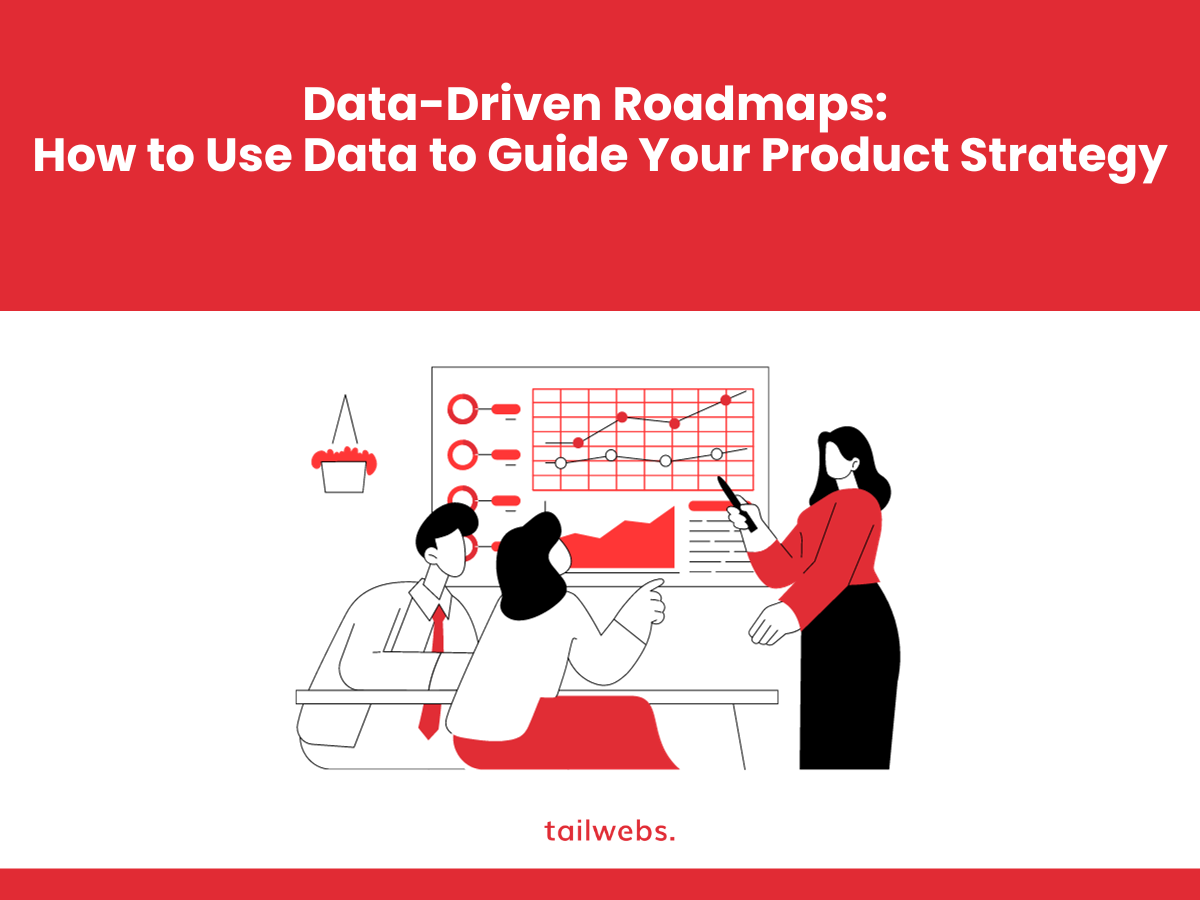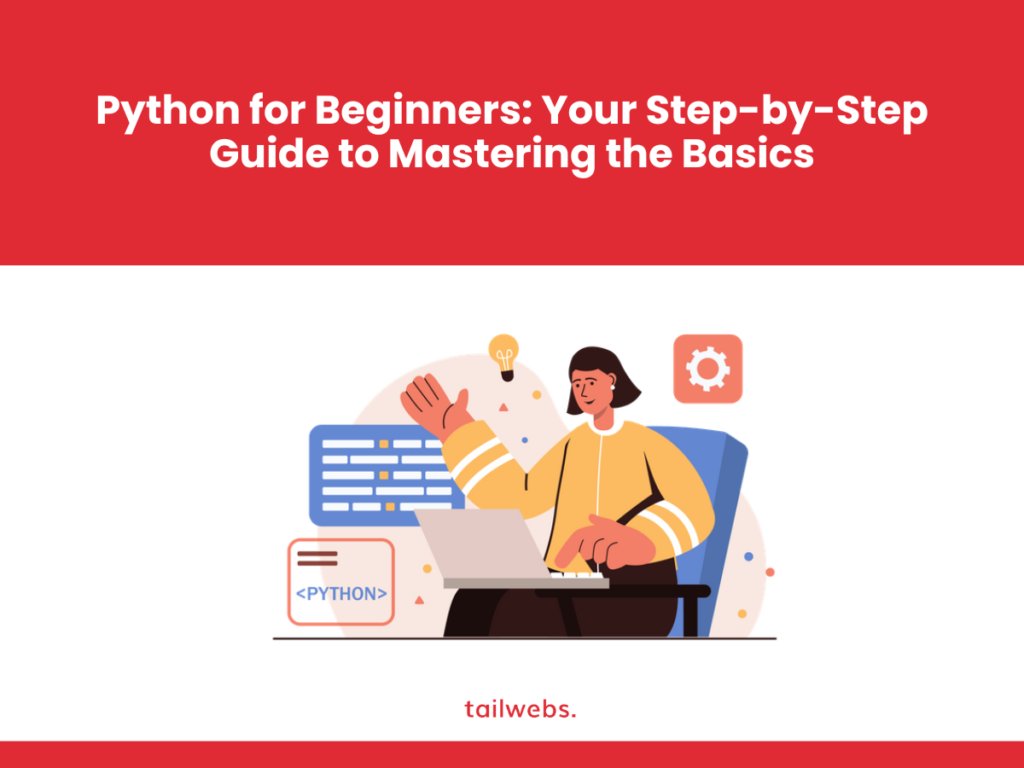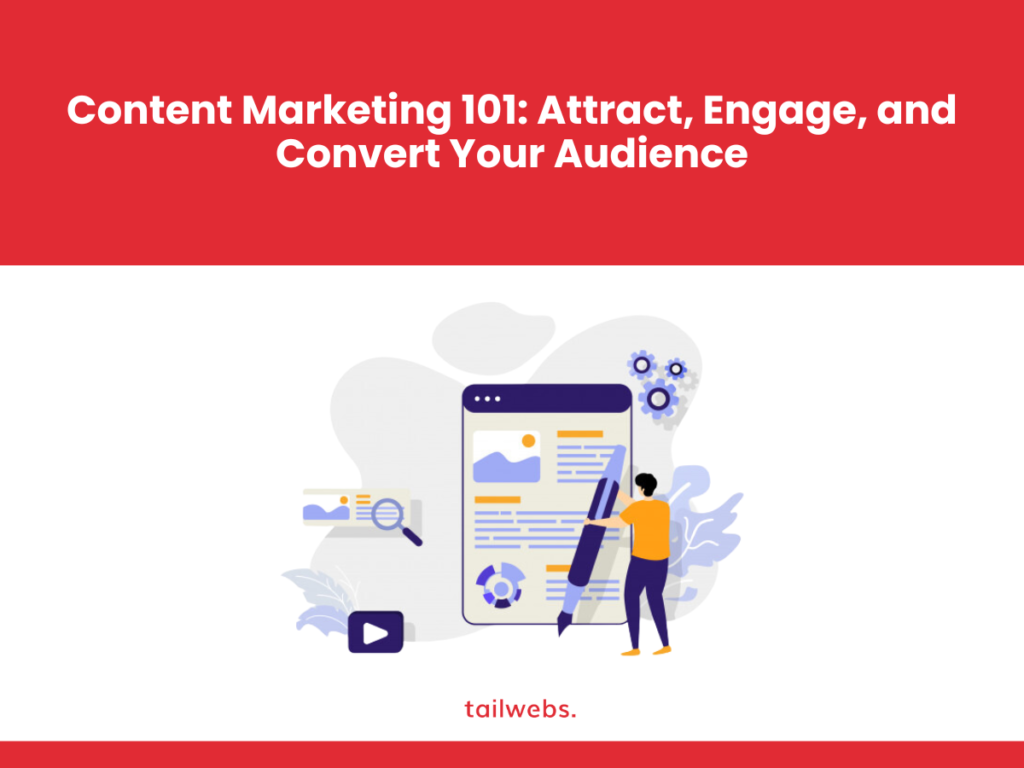In the ever-evolving landscape of product development, intuition and a good hunch no longer suffice. Today, the key to navigating the treacherous waters of success lies in a powerful compass – data. Embrace data-driven roadmaps, and watch your product strategy transform from a blurry map to a crystal-clear chart, steering you towards a triumphant launch and beyond.
Why Data-Driven Roadmaps Rule :
Imagine building a house without blueprints, relying solely on gut feeling to lay the bricks. Product development without data is akin to this precarious endeavour. Data-driven roadmaps provide the architectural plans, the intricate blueprint that unveils the path to a successful product launch and sustained growth.
Here’s why embracing data as your north star is crucial:
Clarity and direction:
Data-driven insights cut through the fog of uncertainty, highlighting customer needs, market trends, and competitor strategies. This crystal-clear vision paves the way for a focused and effective product roadmap.
Reduced risk and uncertainty:
Intuition can be fickle, but data speaks in concrete terms. By basing your roadmap on hard evidence, you minimise the risk of costly miscalculations and ensure your resources are invested in features with the highest likelihood of success.
Measurable progress and success:
Data-driven roadmaps aren’t just about planning; they’re about tracking progress. By establishing key performance indicators (KPIs) and monitoring data throughout the development process, you can measure the impact of your decisions and adjust your course as needed.
Increased customer satisfaction:
By understanding what resonates with your audience, you can prioritise features that address their pain points and deliver real value. This data-driven approach translates to happier customers and a thriving product.
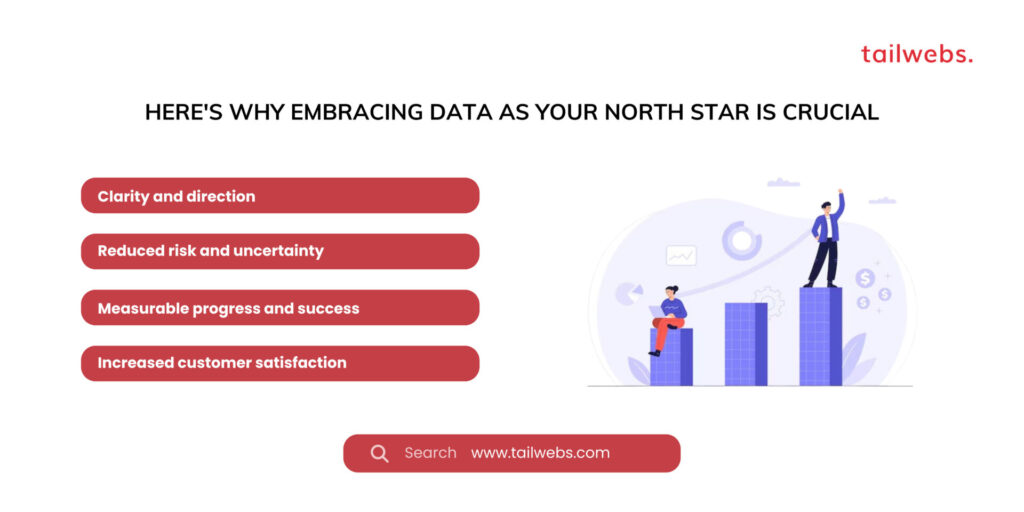
Statistics at a Glance:
- Companies that leverage data-driven decision-making are 6% more profitable than their counterparts. (McKinsey Global Institute, 2020)
- 59% of product leaders attribute successful product launches to data-driven strategies. (ProductPlan, 2023)
Building Your Data-Driven Roadmap for Product Strategy:
Transforming your roadmap from a wish list to a data-driven masterpiece requires a strategic approach. Here are the key steps involved:
1. Identify and prioritise data sources:
Don’t drown in a sea of numbers. Identify the most relevant data sources, including:
Customer analytics:
Web traffic, user behaviour, feedback surveys, and customer support interactions.
Market research:
Industry reports, competitor analysis, and trends in your target market.
Internal data:
Sales figures, user engagement metrics, and product performance data.
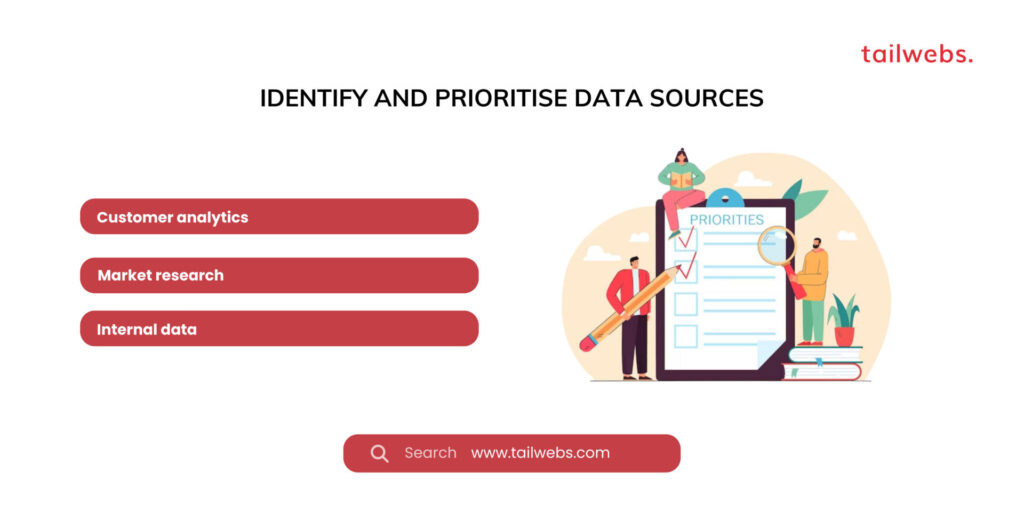
2. Define your goals and KPIs:
What do you want to achieve with your product? Establish clear, measurable goals and identify the KPIs that will track your progress towards them. Common KPIs include user acquisition, retention, conversion rates, and revenue growth.
3. Analyse and interpret the data:
Dive into your data, uncovering patterns, trends, and insights. Look for correlations between user behaviour, market trends, and your product performance. Identify areas of opportunity and challenges to address.
4. Prioritise features and initiatives:
Based on your data analysis, prioritise the features and initiatives that will have the greatest impact on achieving your goals. Use data-driven frameworks like the Kano Model or Value-Effort Matrix to guide your decision-making.
5. Create a flexible and adaptable roadmap:
Markets are dynamic, and so should your roadmap. Be prepared to iterate and adjust your plans based on new data and feedback. Remember, your roadmap is a living document, not a rigid script.
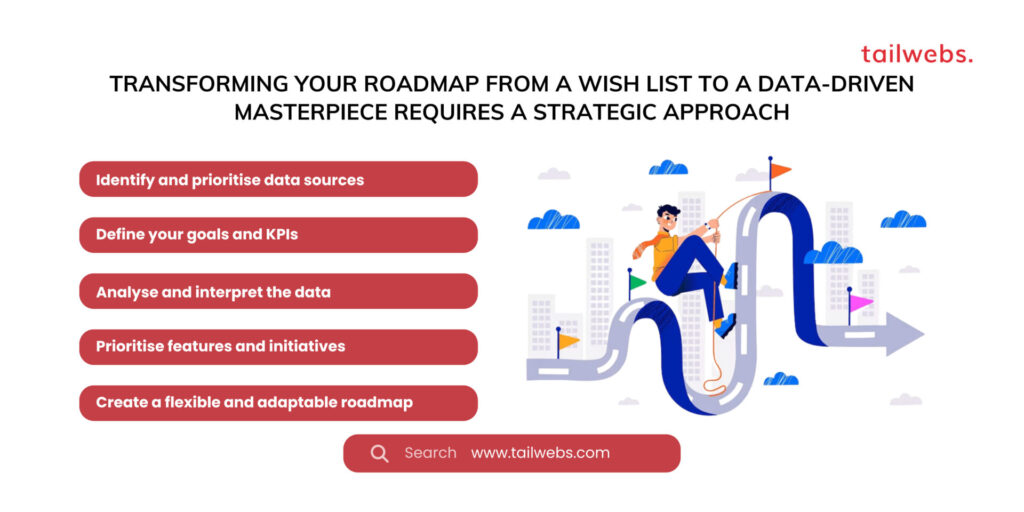
Recommended Tools:
- Google Analytics: Track website traffic and user behaviour.
- Mixpanel: Analyse user engagement and funnel metrics.
- Amplitude: Get insights into user journeys and product performance.
- ProductPlan: Create visual and collaborative product roadmaps.
- Asana: Manage tasks and track progress towards roadmap goals.
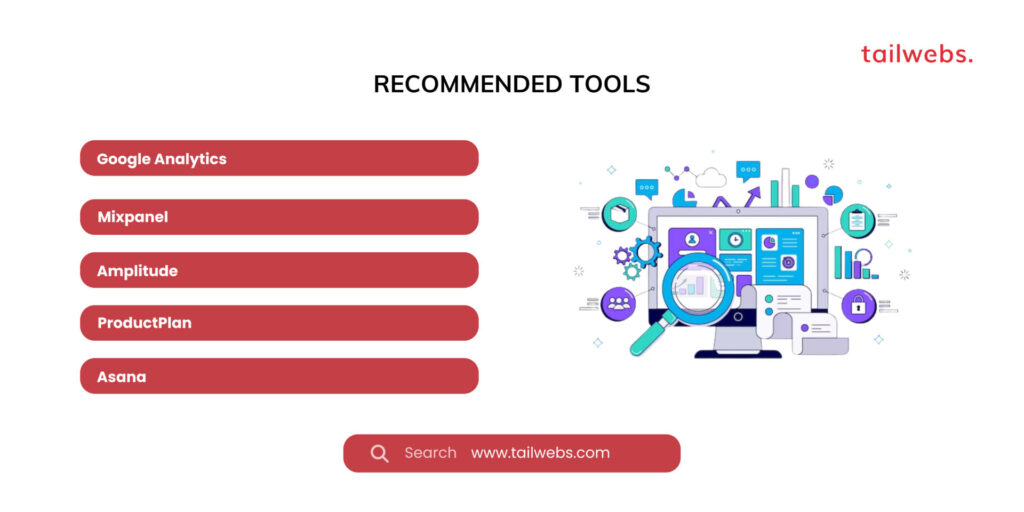
Examples of Data-Driven Roadmaps in Action:
- Netflix: Utilises data to personalise content recommendations, prioritise movie and TV show acquisitions, and inform production decisions, leading to record-breaking user engagement and subscriber growth.
- Spotify: Leverages data to curate personalised playlists and discover new music for users, resulting in increased user satisfaction and retention.
- Airbnb: Analyses data to suggest optimal pricing strategies for hosts, recommend unique listings to travellers, and personalise the user experience, driving increased bookings and market share.
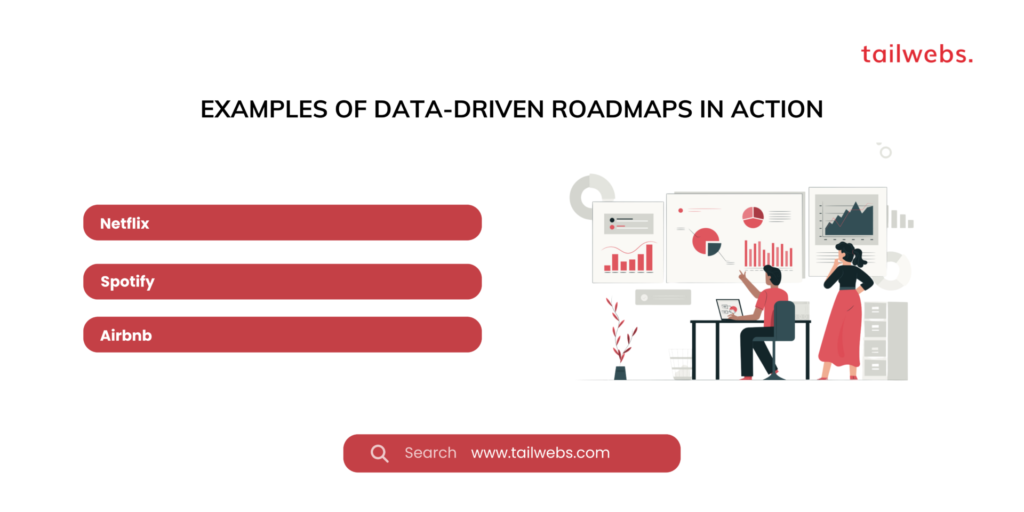
Beyond Launch: Data-Driven Growth
Your product has seen the light of day, its triumphant launch fueled by the insights gleaned from your data-driven roadmap. But the adventure doesn’t end there. In the bustling marketplace, your product needs to maintain its momentum, and the compass guiding its journey remains the same – data.
Continuous Data-Driven Iteration:
Think of your product as a living organism, constantly evolving to adapt to its environment. The data you gather post-launch provides essential nourishment for this evolution. Regularly monitor key metrics like user engagement, feature adoption, and customer satisfaction. Use these insights to:
Identify areas for improvement:
Analyse user feedback and usage patterns to pinpoint features that aren’t resonating or areas where your product can provide greater value.
A/B test new features:
Don’t gamble with intuition. Use A/B testing to experiment with different features and design elements, choosing the ones that optimise performance and user experience.
Personalise and tailor:
Leverage data to personalise your product offerings and communication, providing relevant experiences for individual users and maximising engagement.
Embracing Real-Time Feedback:
Your customers are your most valuable data source. Implement feedback mechanisms like surveys, social media interactions, and customer support channels to capture their ongoing experiences and suggestions. This real-time feedback loop lets you address concerns quickly, identify emerging trends, and shape your product roadmap for future iterations.
Data-Driven Marketing and Optimization:
The data you gather transcends product development. Use it to refine your marketing strategies, identifying the most effective channels to reach your target audience and tailor your messaging to resonate with their needs. Optimise your website, landing pages, and ad campaigns based on data-driven insights, maximising your marketing ROI and attracting the right customers.
From Roadmap to Growth Engine:
By embracing a data-driven approach, your product roadmap transforms from a static plan into a dynamic growth engine. It fuels continuous improvement, ensuring your product remains relevant and responsive to changing market trends and customer needs. Remember, data isn’t just a tool for planning; it’s a compass for navigating the treacherous waters of product development and steering your creation towards sustained success.
Embrace the data-driven journey, unlock the hidden potential of your product, and witness the magic of constant evolution unfold. The market awaits, and with your data compass in hand, you’re ready to conquer it.
Call to Action:
- Ready to unleash the power of data-driven roadmaps? Share your experiences and thoughts in the comments below!
- Looking for resources to kickstart your data-driven journey? Explore the recommended tools and examples mentioned throughout the blog.
- Still have questions? Don’t hesitate to reach out, and let’s delve deeper into the world of data-driven product development!

